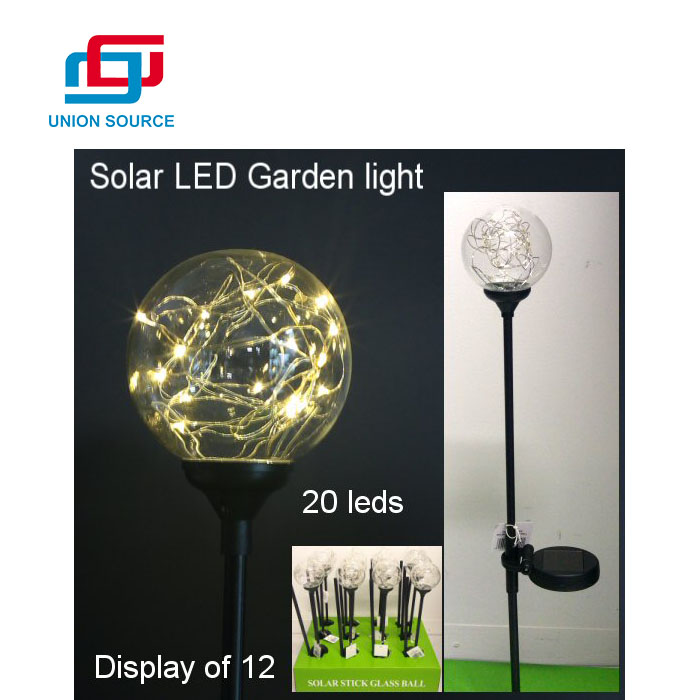Features and considerations to keep in mind when choosing garden lights
2023-11-23
Garden lights, also known as outdoor or landscape lights, are designed to illuminate and enhance the aesthetics of outdoor spaces such as gardens, pathways, patios, and yards. Here are some features and considerations to keep in mind when choosing garden lights:
1. Lighting Type:
- Solar Lights: Powered by solar panels, these lights absorb sunlight during the day and use it to power LED bulbs at night. Solar lights are energy-efficient and easy to install but may not be as bright as wired options.
- LED Lights: Light-emitting diode (LED) lights are energy-efficient, durable, and produce a bright and focused light. LED garden lights are available in various styles and designs.
2. Power Source:
- Consider the power source for the lights:
- Hardwired/Electric: These lights are connected to your home's electrical system. They are typically brighter and more reliable but may require professional installation.
- Solar: Solar-powered lights are self-contained and don't require external wiring. They are easy to install and can be placed in areas with access to sunlight.
3. Lighting Purpose:
- Determine the purpose of the lights:
- Ambient Lighting: Soft, general illumination for creating a pleasant atmosphere.
- Task Lighting: Focused light for specific areas, such as pathways or seating areas.
- Accent Lighting: Highlights specific features like plants, sculptures, or architectural elements.
4. Design and Style:
- Garden lights come in various designs, including lanterns, spotlights, pathway lights, string lights, and more. Choose a style that complements your outdoor decor and fits the overall aesthetic of your garden.
5. Material:
- Common materials for outdoor lights include metal (such as aluminum or stainless steel), plastic, and glass. Ensure the materials are weather-resistant to withstand outdoor elements.
6. Weather Resistance:
- Look for lights with a high IP (Ingress Protection) rating to ensure they are resistant to dust and water. This is especially important for outdoor lights exposed to various weather conditions.
7. Brightness and Color Temperature:
- Consider the brightness of the lights and the color temperature (measured in Kelvins, K). Warmer temperatures (around 2700K) create a cozy ambiance, while cooler temperatures (5000K and above) provide a brighter and more vibrant light.
8. Motion Sensors and Timers:
- Some garden lights come with motion sensors or timers to save energy by turning on only when needed. This is particularly useful for security and pathway lighting.
9. Installation and Placement:
- Consider how easy the lights are to install and whether they come with the necessary mounting hardware. Plan their placement to ensure optimal lighting coverage.
10. Adjustable and Directional Lights:
- Lights with adjustable heads or directional features allow you to direct the light where it's needed, providing flexibility in your garden lighting design.
11. Cord Length (For Solar Lights):
- If you're opting for solar lights, consider the length of the cord connecting the solar panel to the lights. Ensure it's long enough to place the panel in a location with sufficient sunlight.
12. Energy Efficiency:
- LED lights are known for their energy efficiency. If you're using electric lights, choose energy-efficient options to minimize electricity consumption.
13. Warranty and Brand Reputation:
- Check the warranty offered by the manufacturer and consider purchasing from reputable brands with a track record of producing reliable outdoor lighting solutions.
14. Budget:
- Garden lights are available at various price points. Consider your budget and choose lights that offer the features and quality you need within that range.
Garden lights not only serve a practical purpose by illuminating outdoor spaces but also contribute to the overall ambiance and visual appeal of your garden. Selecting the right garden lights involves considering the lighting type, design, power source, and other factors to meet both functional and aesthetic requirements.



